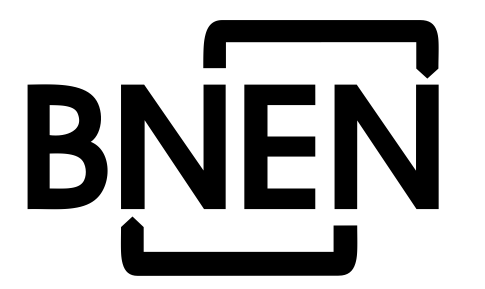Nuclear and radiological risk governance
Prof. Fernand Vermeersch – UCLouvain
Prof. Greet Janssens-Maenhout – UGent
3 ECTS
90 hours study time
- 18 contact hours theory
- 18 contact hours exercises/laboratory sessions/visits
- 0 hours additional personal work (reading etc.)
-
Part 1: Nuclear & Radiological Risk Governance – a critical exploration of theory and practice.
Gaston Meskens (SCK CEN)The student should gain insight into the various theoretical understandings of risk governance as a policy process and be able to assess current practices (nuclear energy policy, climate change policy, policy wrt medical applications, …) against these theoretical views. In particular, the student should develop an understanding of the working of science in the context of risk governance and be able to develop an own critical opinion with respect to the political and ethical aspects of practices of nuclear & radiological risk governance. In addition, the student should be able to undertake critical readings of existing regulation and recommendations with regard to radiological protection and safety culture (historical development, political dimensions, considerations on accountability, …).
Part 2: Safety Culture.
Fernand Vermeersch (UCLouvain)The student should be aware of the organisational, the human and the technical dimensions of safety. The student should be familiar with the cultural aspects of safety. The student should be capable to assess some safety culture characteristics and factors. The student should understand the importance of an adequate integrated management system and the concept of processes.
Part 3: Nuclear Safeguards & Security.
Greet Janssens-Maenhout (UGent)The student should understand the difference in content, legal background and technical implementation of safety, safeguards and security. The student should be able to derive the appropriate statistical test for the 3 safeguards goals. The student should be able to identify proliferation sensitive technologies, how these are dealt with in international trade. The student should be aware of nuclear security measures and detection techniques used at border control.
-
Part 1: Nuclear & Radiological Risk Governance – a critical exploration of theory and practice.
Gaston Meskens (SCK CEN)The overall aim of this part is to provide better insight into the complexity of nuclear risk governance and to discuss as well the moral foundations for risk governance as the practical implications for research and policy. The course will start with basic reflections on risk perception and risk justification and will also discuss specific case studies in this respect. Based on these considerations, together with the students, a normative view on the ‘method of risk justification and governance’ in societal context (as compared to the occupational context) will be constructed. Consequently, this ‘normative view on method’ will be
used to asses current understandings of radiological protection and safety culture (as outlined in existing recommendations and regulations). A last part will concentrate on existing and emerging advanced scientific methods (‘technology assessment’, ‘science & technology studies’, ‘mode-2 science’, ‘transdisciplinarity’, …) that would support a more deliberate dealing with risk governance in research and policy.Part 2: Safety Culture.
Fernand Vermeersch (UCLouvain)
The course shall include a synthesis of the safety culture and integrated management systems points of view of the IAEA. Particular attention will be given to safety culture assessment, its pitfalls and its use in daily practice (case discussions). To anticipate the third part on Safeguards and Security, some discussion about the cultural aspects of safety and security will be presented. The organisational aspects of safety management as part of the management of the entire company within an integrated management system will be presented.
Part 3: Nuclear Safeguards & Security.
Greet Janssens-Maenhout (UGent)
The legal background and the technical measures, necessary to guarantee peaceful use of nuclear energy are explained with a historical overview. The international and regional framework for inspectorates, their goals and detection tools are described, firstly for safeguards of nuclear material and secondly for nonproliferation of nuclear technology. The latter touches upon the Nuclear Suppliers Group and export control with dual-use list and trigger list. Nuclear security will be addressed with examples of detectors and radiation portal monitors used at border control.
-
- Part 1: Lecture slides + a reader with key scientific papers
- Part 2: Slides of the lectures
- Part 3: Nuclear Safeguards and Non-Proliferation (2008), ed. G. Janssens-Maenhout, syllabus of the ESARDA course, ISBN-10: 3844363300 + lecture presentations.
Other useful references:
- For safety culture: Michel Llory, René Montmayeul, ‘L’accident et l’organisation’, Ed. Préventique, Bordeaux, 2010; ISBN 978-2-911221-47-8 IISN 1275-7144
- IAEA documents: Safety Series INSAG 4 – 15; IAEA TECDOC 1329; IAEA General Standard GS-R-3; GS-G-3.1; GS-G-3.5
- Material available via the TRASNUSAFE project.
- References within the Course of Nuclear Safeguards and Non Proliferation – ESARDA course syllabus.
-
- Part 1: Basic knowledge of radiation and nuclear installations, basic knowledge of the nuclear history and of the current state of affairs in nuclear R&D, industry and policy
- Part 2: Basic knowledge of radiation and nuclear installations
- Part 3: Introduction to nuclear energy
-
Part 1: Task assignment and oral examination on 20 points
Part 2: Oral examination on 20 points
Part 3: Written examination, on 20 points, 12 points for theory, 8 points for exercise.- The grade will be determined by weighing the grades on the separate parts, in proportion to the number of ECTS per part. In case of a failure for one of the parts, the examination committee can decide to penalize by lowering the final grade.
- The examination of the separate parts of this course can be scheduled on multiple days.
